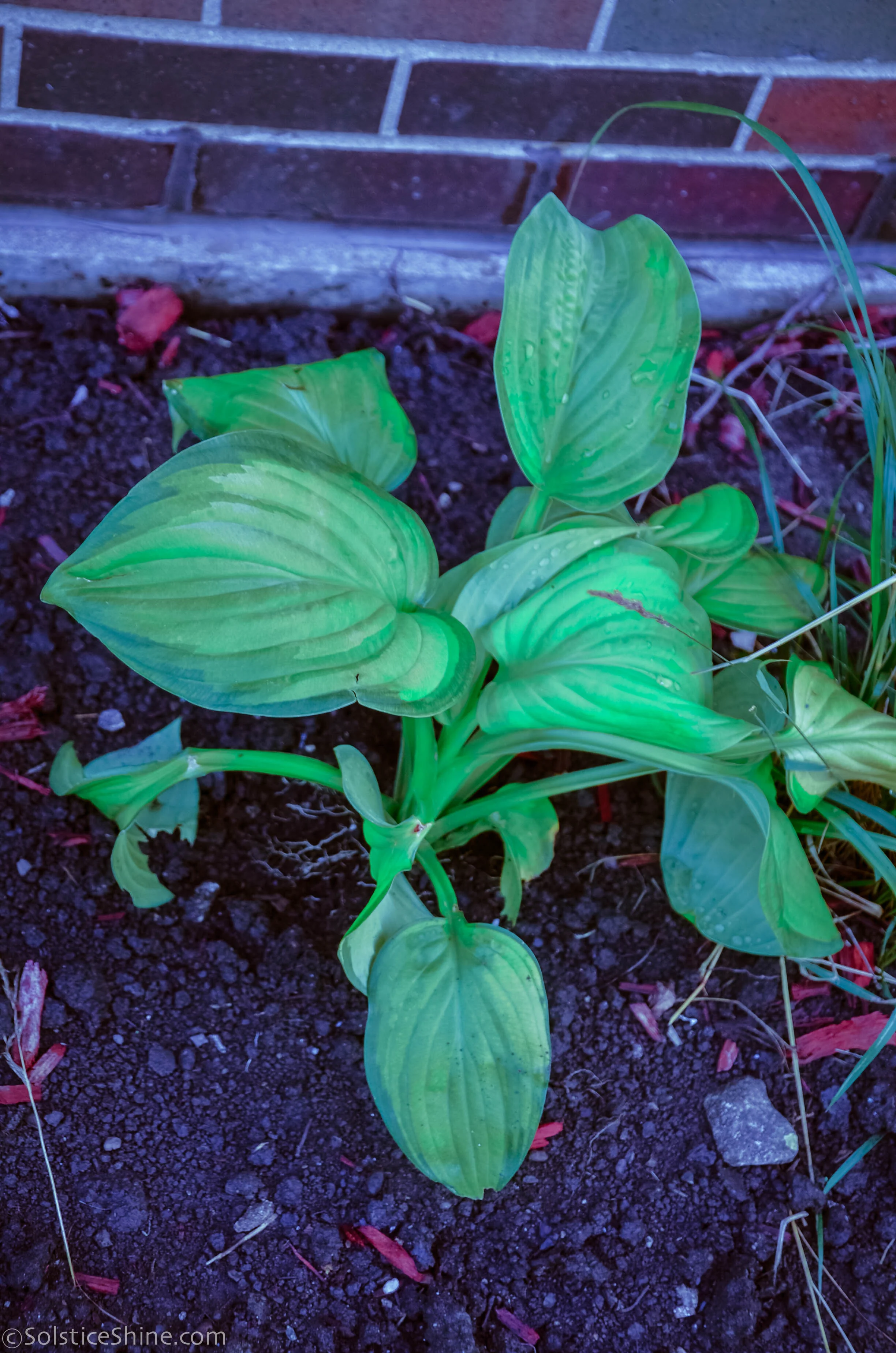Hostas grow in zones 3 to 9 and the mature plant size range from 2 to 36 inches in height and 4 to 60 inches in width. Hostas produce stalks of light purple, oval flowers in mid-summer. These plants are shade tolerant, and it is best to avoid full afternoon sun. Hostas prefer plenty of water, demanding approximately 1.5 inches of rain (or watering) a week - water 3/4 inch every 3 to 4 days. A layer of mulch will keep the roots at an even temperature, preserve moisture and prevent competition from weeds. These plants may quit growing or become summer dormant as a result of too much heat or from water stress. They are prone to late frost damage in the spring once the new leaves emerge, but exhibit fastest growth during this season (1). Hostas are slow spreading perennials grown mainly for their beautiful foliage and ground covering characteristics (2). They have trouble competing with shallow rooted trees and shrubs, so container planting is recommended in these areas for root space. If you are planning on putting hostas in a container, you should cut holes in the bottom of the pot to ensure good drainage. If you are placing hostas directly in the ground, separate them about 60 centimeters apart to provide adequate room for growth. Hostas are popular border plants - some varieties of hostas grow 12 inches or less in height but have increased horizontal growth. Hostas also are widely used for background planting because they fade to all green and show off more colorful varieties of plants (3). They are great plants to control weeds because they leave no room or light for them. Companions for a hosta shade garden include ferns, baptisia (false indigo), bleeding hearts, geraniums and dianthus. Hostas are less subject to pests and diseases than other perennials, however, snails, slugs, cut worms, leaf beetles, grasshoppers, root and leaf nematodes are known to eat hostas. To diminish slug problems, use pine straw or cocoa mulch around the base of the plant. Shredded hardwood mulch or leaves can help to retain water in hostas, but these mulches can encourage slugs. They can be propagated by dividing crowns, but tissue culture is a faster and preferred process for hosta cultivars.
Culinary or Medicinal Uses
Hostas have very minor medicinal or culinary uses, but its young leaves and leaf stems are sometimes cooked and eaten (by boiling for about 20 seconds until leaves are bright green). Since the leaves are edible, they are sometimes included in salads although they add more texture than flavor (4). The flowers are said to have anticancer activity, and are also edible with a “peppery” flavor. It cooks similar to zucchini and can be used as a substitute (5). The essential oil is obtained from the leaves and used in perfumes (2).
Significance to Cultural Communities
Hostas are native to Japan, Korea and China. Documentation of use as a popular garden plant, as food, as a medicinal herb and as a source for aromatics goes back centuries to the Han Dynasty (5). H. plantaginea was the first hosta known on the continent of Europe in the 1780s and was first grown there under glass for its rare tropical attributes. In China, the decorative part of a woman's hairpin is made often of jade shaped similar to the unopened flower bud of H. plantaginea. Chinese folklore has a legend that a goddess dropped her hairpin from which this beautiful hosta grew - confirming the presence and love for this hosta among the Chinese (6).
From the Community Voice
"In order to combat the problem of slugs and snails (sap sippers that like moist, shady environments) my mom placed plastic lids of peanut butter jars near the hostas in her garden. When it rains, the lid collects some water and the slugs are attracted to it and drown if they enter. Additionally, slugs dry up with salt, and a little Epsom salt will discourage slugs and actually promote root growth." - Karl
------------------------------------------
1) “About Hosta.” American Hosta Society. 2009. http://www.americanhostasociety.org/AboutHosta.html
2) Asch, Lam. “Hosta plantaginae” Plants for A Future. http://www.pfaf.org/user/Plant.aspx?LatinName=Hosta+plantaginae
3) Teager, David. “Hosta Facts.” Delaware Valley Hosta Society. 4, May, 2012. http://www.delvalhosta.org/hostafacts.htm
4) Moore, Arwin. “You can Eat Hostas! And They’re Tasty!” Backyard Cooks. 16, May, 2011. http://backyardcooks.ca/?p=145
5) “How to Eat a Hosta.” Garden Web. 24, April, 2012. http://forums.gardenweb.com/forums/load/hosta/msg042312139346.html
6) Schmid, George. “H. plantaginea (Lamarck) Ascherson 1863.” The Hosta Library. 5, February, 2010. http://www.hostalibrary.org/species/pdf/plantaginea.pdf

